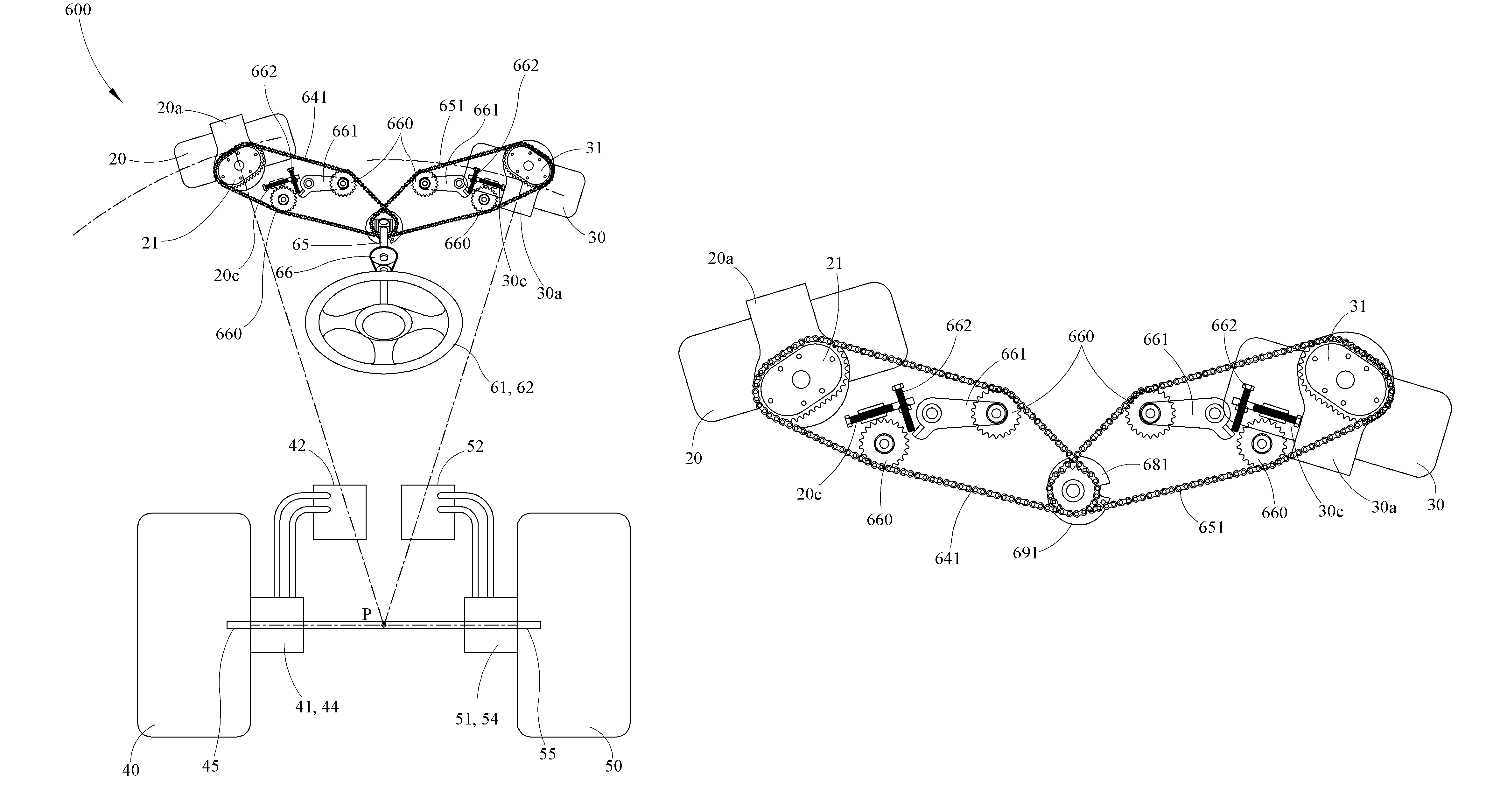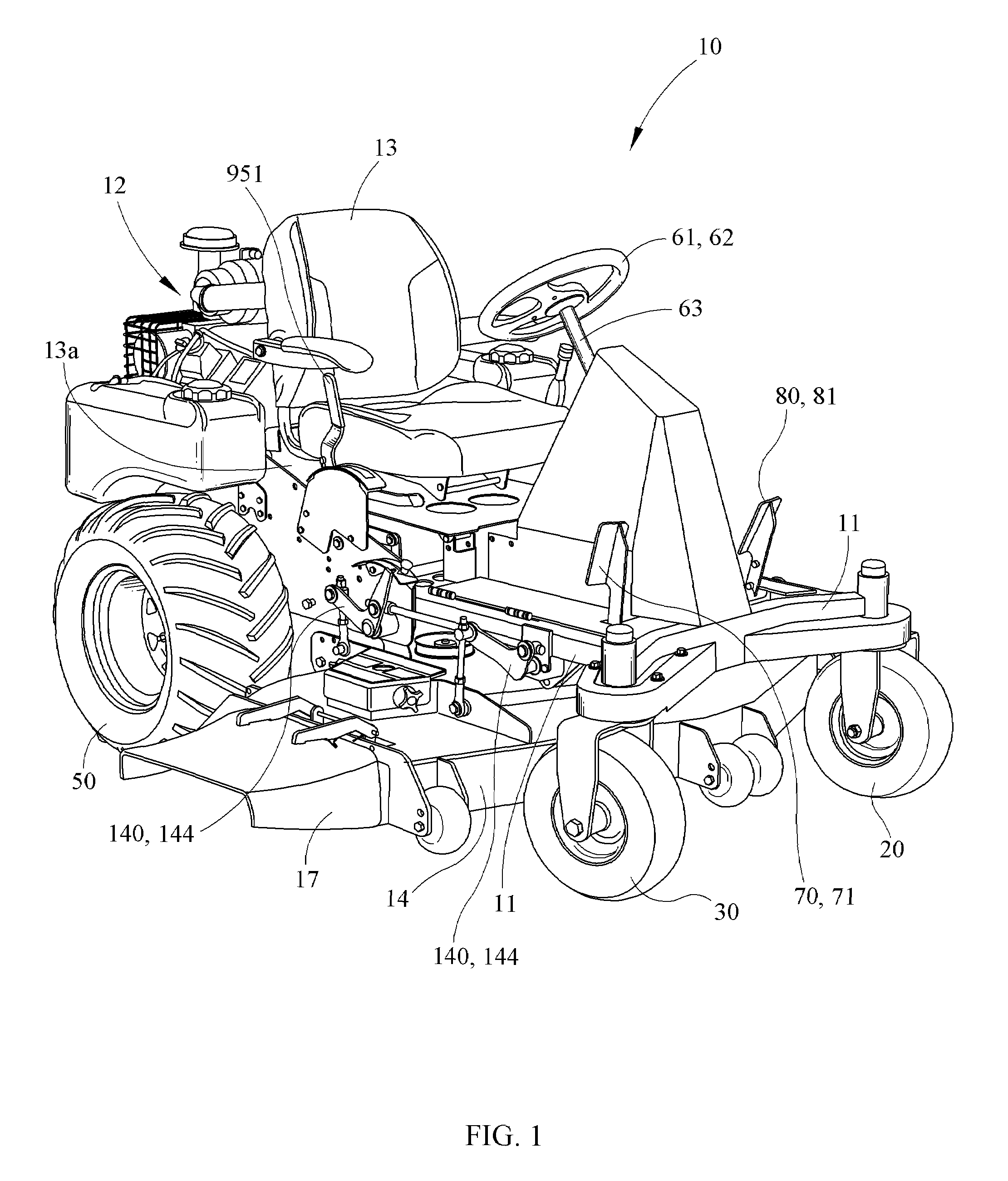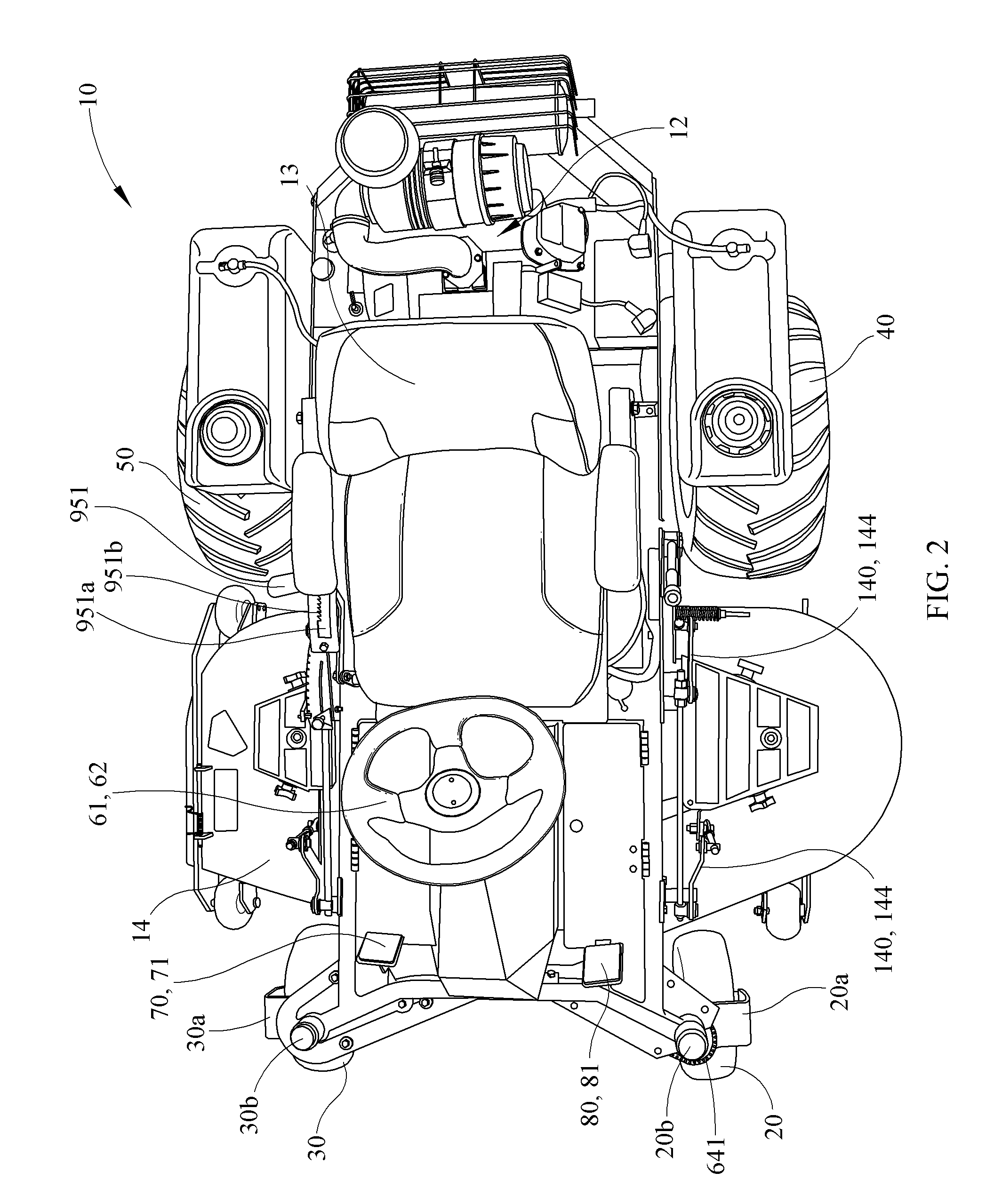Zero-turn radius vehicle with steerable front wheels
a technology of steering wheel and zero-turn radius, which is applied in the direction of non-deflectable wheel steering, transportation and packaging, agriculture tools and machines, etc., can solve the problems of asynchronous steering system and inability to driv
- Summary
- Abstract
- Description
- Claims
- Application Information
AI Technical Summary
Benefits of technology
Problems solved by technology
Method used
Image
Examples
Embodiment Construction
[0077]While the present invention will be described more fully hereinafter with reference to the accompanying drawings in which particular embodiments and methods are shown, it is to be understood from the outset that persons of ordinary skill in the art may modify the invention herein described while achieving the functions and results of this invention. Sound engineering judgment may be used to modify various aspects and components of the invention without detracting from the broad, general teachings hereof. Accordingly, the description that follows is to be understood as illustrative and exemplary of specific embodiments within the broad scope of the present invention and not as limiting the scope of the invention. In the following descriptions, like numbers refer to similar features or like elements throughout.
[0078]FIGS. 1 through 37 depict an apparatus 10 in the form of a vehicle according to one embodiment of the invention. Throughout this description the terms “apparatus” an...
PUM
 Login to View More
Login to View More Abstract
Description
Claims
Application Information
 Login to View More
Login to View More - R&D
- Intellectual Property
- Life Sciences
- Materials
- Tech Scout
- Unparalleled Data Quality
- Higher Quality Content
- 60% Fewer Hallucinations
Browse by: Latest US Patents, China's latest patents, Technical Efficacy Thesaurus, Application Domain, Technology Topic, Popular Technical Reports.
© 2025 PatSnap. All rights reserved.Legal|Privacy policy|Modern Slavery Act Transparency Statement|Sitemap|About US| Contact US: help@patsnap.com



